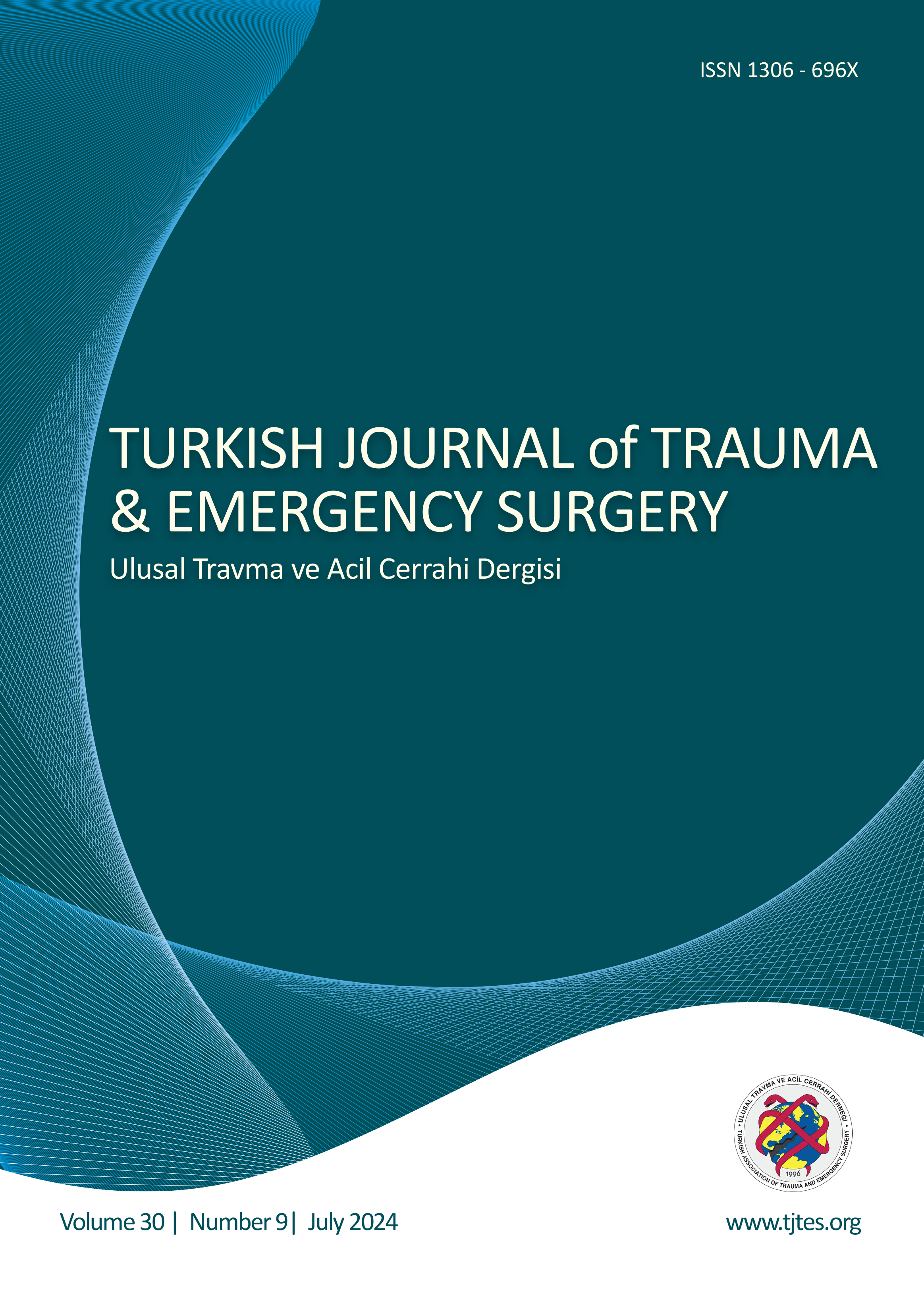Quick Search
The effect of distal ureteral lateralization angle on ureteral trauma avoidance and successful ureteral access sheath placement
Metin Yığman1, Hale Çolakoğlu Er21Department of Urology, Ankara Etlik Integrated Health Campus, Ankara-Türkiye2Department of Radiology, Ankara Guven Hospital, Ankara-Türkiye
BACKGROUND: The use of ureteral access sheaths (UAS), which offer advantages in flexible ureteroscopic lithotripsy (fURL), may lead to undesirable conditions such as ureteral injury, ischemia, and prolonged ureteral stenosis. The aim of this study was to investigate the effect of the distal ureteral lateralization angle on successful UAS placement.
METHODS: We analyzed the data of patients who underwent fURL for kidney and/or proximal ureteral stones retrospectively. Based on the preoperative computed tomographic examinations of the patients, the bladder outlet was considered the zero point. We calculated the angle values between the horizontal axis passing through this point and the most lateralized point of the distal ureter. The patients were divided into two groups: those to whom UAS was successfully placed and those to whom UAS placement failed.
RESULTS: No significant difference was detected between the groups with successful UAS placement (n=36) and those without UAS placement (n=12) in terms of sex, laterality, localization, number of stones, stone burden, and bladder volumes evaluated with preoperative computed tomography (p>0.05). However, a significant difference was found between the two groups regarding age and distal ureteral lateralization angle (p<0.001, p=0.013).
CONCLUSION: The distal ureteral lateralization angle is considered to be an effective factor in the placement of UAS in patients scheduled for fURS.
Keywords: Ureteroscopy, ureterorenoscopy; ureteral access sheath; ureteral curvature; ureteral angle.
Distal üreteral lateralizasyon açısının üreteral travmadan kaçınma ve başarılı üreteral erişim kılıfı yerleştirme üzerine etkisi
Metin Yığman1, Hale Çolakoğlu Er21Ankara Etlik Şehir Hastanesi, Üroloji Kliniği, Ankara, Türkiye2Ankara Güven Hastanesi, Radyoloji Kliniği, Ankara, Türkiye
AMAÇ: Fleksibl üreteroskopik litotripside (fURL) avantanjları olan üreteral erişim kılıflarının (ÜEK) kullanımında üreteral yaralanma, iskemi ve uzun süreli üreteral stenoz gibi istenmeyen durumlar ortaya çıkabilir. Çalışmanın amacı distal üreteral lateralizasyon açısının başarılı ÜEK yerleştirilmesi üzerindeki etkisini araştırmaktır.
GEREÇ VE YÖNTEM: Böbrek ve/veya proksimal üreter taşları için fURL prosedürü uygulanan hastaların verileri retrospektif olarak analiz edildi. Hastaların preoperatif bilgisayarlı tomografik incelemelerine dayanarak mesane çıkışı sıfır noktası olarak kabul edildi ve buradan geçen yatay eksen ile distal üreterin en lateralize noktası arasındaki açı değerleri hesaplandı. Hastalar ÜEK'nin başarılı bir şekilde yerleştirildiği ve yerleştirilemediği hastalar olarak 2 gruba ayrıldı.
BULGULAR: Başarılı ÜEK yerleştirilen (n=36) ve yerleştirilemeyen (n=12) gruplar arasında cinsiyet, lateralite, lokalizasyon, taş sayısı, taş yükü ve ameliyat öncesi bilgisayarlı tomografi ile değerlendirilen mesane hacimleri açısından anlamlı bir fark saptanmadı (p>0.05). Öte yandan, yaş ve distal üreteral lateralizasyon açısı açısından iki grup arasında anlamlı fark bulundu (p<0.001, p=0.013).
SONUÇ: Distal üreteral lateralizasyon açısının fURS planlanan hastalarda ÜEK yerleştirilmesinde etkili bir faktör olduğu düşünülmektedir.
Anahtar Kelimeler: Üreteroskopi, üreterorenoskopi; üreteral erişim kılıfı; üreteral kurvatür; üreteral açı.
Manuscript Language: English




